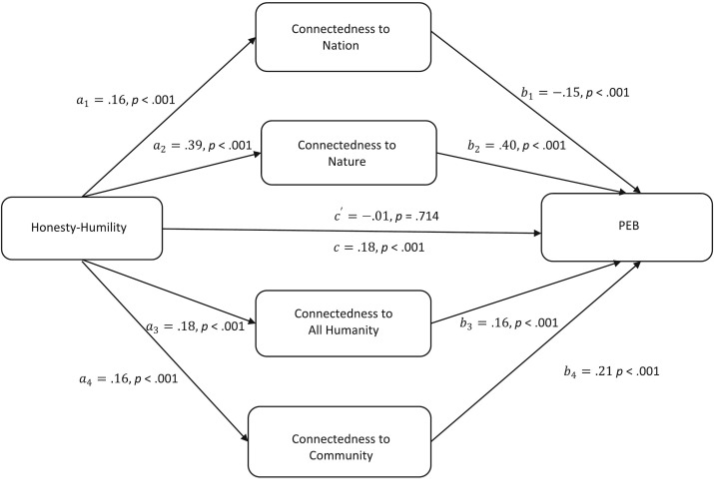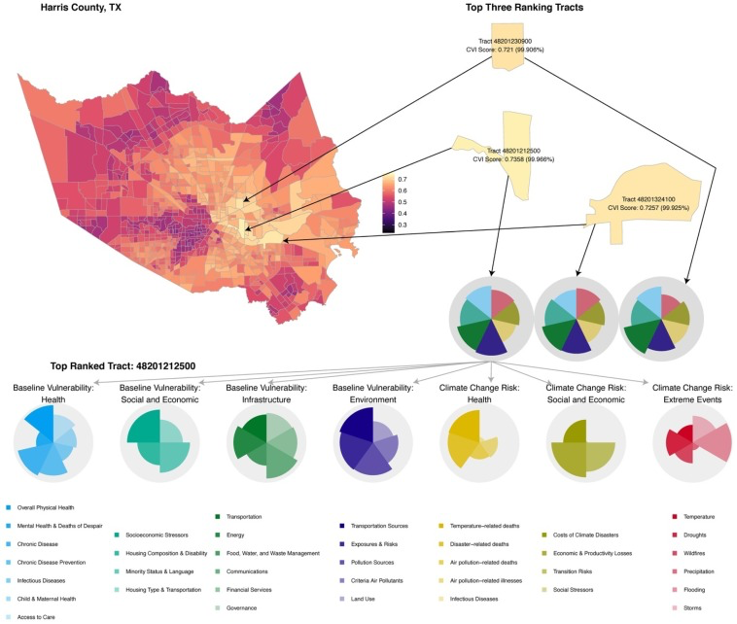Energy Innovation partners with the independent nonprofit Aspen Global Change Institute (AGCI) to provide climate and energy research updates. The research synopsis below comes from AGCI James C. Arnott. A full list of AGCI’s updates is available online at https://www.agci.org/resources?type=research-reviews.

The U.S. Surgeon General recently made a stunning announcement proclaiming a national epidemic of loneliness and isolation. Alongside his pronouncement came a report with a chilling takeaway that lacking social connection can equal the health impacts of smoking 15 cigarettes a day. The report documents alarming trends: loneliness among young people has increased every year since 1976, and Americans across the age spectrum spend 24 hours more per month alone than they did in 2003.
Beyond health impacts, such isolation can erode a community’s capacity to build social capital and cohesion, vital capacities for responding to the shocks of extreme weather and climate-related disasters. Surprisingly, the words “climate” or “climate change” do not appear even once in the Surgeon General’s report, even though it explores wide-ranging implications of and solutions for social isolation, including “natural hazards.” Several recent social science and interdisciplinary studies, however, have started to explore aspects of this connection.
Late last year, two health researchers from the University Medical Center Hamburg-Eppendorf, André Hajek and Hans-Helmut König, reported an association between climate anxiety and perceived social isolation. They surveyed over 3,000 people living in Germany, using questions designed to test levels of loneliness, isolation, and climate anxiety. Respondents also provided demographic and lifestyle details, such as age, gender, location, and alcohol/smoking habits. When these factors are included, the survey data analysis found an association between climate anxiety and both loneliness and social isolation. Higher levels of loneliness and isolation were significantly associated with higher levels of climate anxiety for the overall population and for those between the ages of 18–64.
Interestingly, the study found no significant association for respondents aged 65–74, and the actual magnitude of association (i.e., effect size), even when statistically significant, was low to moderate. Furthermore, while the study demonstrated a correlation, it was unable to explain whether loneliness breeds climate anxiety, or whether climate anxiety or some other factor may be driving loneliness and isolation.
Even with these limitations, the extent to which climate anxiety might depress action on climate solutions—thereby fueling a vicious, self-perpetuating cycle—raises concerning questions about the broader relationship between social disconnection and environmental action.
Social Connection And Environmental Action
To get at this question, two Australian psychologists, Madelin Duong and Pamela Pensini of Monash University, examined the relationship between connectedness and pro-environmental behavior (PEB)––the actions an individual may take to try to minimize or reverse negative impacts on the environment. Their work, which was published in the journal Personality and Individual Differences, draws on an online survey of 632 Australian adults who self-rated their connectedness to their community, nation, all humanity, and nature. Respondents also answered 22 questions about whether they had performed various kinds of PEBs in the previous six months as well as 10 items aimed at understanding respondents’ underlying orientation toward “prosocial behaviors” (e.g., one item read “Having a lot of money is not important to me.”).
Based on the responses, the authors constructed a statistical model to predict the likelihood of an individual performing PEBs (see Figure 1). They found that prosocial tendencies (described in Figure 1 as “Honesty-Humility”), along with connectedness to nature, community, and humanity, are significant positive predictors of PEB; that is, the more self-reported feeling of connectedness, the higher probability a respondent would have reported PEBs. Connectedness to nature was the largest positive predictor, but connectedness to community was also significant. Interestingly, connectedness to nation was shown to be a negative predictor, even though it was positively associated with prosocial behavior.
This study reinforces an intuition many environmental advocates may already hold––that a meaningful connection to community or nature provides individuals a compelling sense of relevance or motivation to act. The survey results suggest that connection to one’s nation may not actually facilitate, or could even hinder, PEB. While these interpretations are interesting, the study design and context mainly construct a framework of PEB that requires further testing beyond the confines of a single online survey in one country.

Social Factors That Shape Climate Vulnerability
How individuals are connected to their community and the attributes of community cohesion also affect how people are impacted by natural, or increasingly human-made, climate disasters. A recent U.S. multi-author study in Environment International led by P. Grace Tee Lewis of Environmental Defense Fund makes explicit the social and community factors that shape widely varying levels of climate vulnerabilities in the United States. Creating a “Climate Vulnerability Index” (CVI), the authors build on efforts dating back to a landmark 2003 paper led by Susan Cutter, which first attempted to map the social factors contributing to environmental hazard vulnerability (Cutter, Boruff, & Shirley, 2003). That paper created the first ever Social Vulnerability Index (SoVI), which explicitly considered how variables like socioeconomic status, family structure, and local infrastructure shape how communities experience the physical impacts of a disaster.
Tee Lewis and colleagues draw upon an updated version of the SoVI and numerous other datasets to formulate their CVI, which is intended to help pinpoint, down to the census tract level, opportunities for investing in historically low-income communities, such as through the Biden administration’s Justice40 initiative, which prioritizes such regions to receive at least 40% of the benefits of federal climate and clean energy investments.
The CVI incorporates 200 health, socioeconomic, infrastructure, and climate risk variables, including some specifically related to social connectedness, such as the number of civic and social organizations in a community and self-reported mental health. When these factors are incorporated, even areas that expect relatively lower physical impacts from climate change, such as many parts of Alaska, can still experience harm based on their baseline vulnerabilities.

Integrated geospatial datasets like the CVI are limited by relying solely on datasets that can be uniformly applied (and even then, this study relies on sparse data for Alaska and Hawaii). But the CVI can help pinpoint potential social drivers of vulnerability in a specific context and thus inform more tailored capacity-building actions. For instance, a look into the top three most vulnerable census tracts of Harris County (encompassing Houston, Texas) express similarly high levels of climate variability but owe their vulnerability to different combinations of health, socioeconomic, and climatic stressors (Figure 3).

Advancing Connection
Several recent studies featured here suggest that the impacts of loneliness and social disconnection may have direct relevance for our individual perceptions and actions on climate change. Yet there are real limitations to how we measure, collect, and analyze this information to draw conclusions. These studies simply provide a starting point to consider how we might link concern about loneliness and isolation, among other social variables, to climate action.
Doing so provides a real opportunity to consider the many opportunities for multi-solving, where one strategy or a combination of strategies simultaneously address multiple problems. Whether aimed at coinciding root causes or solutions with multiple co-benefits, multi-solving may reveal novel configurations of ideas or interest groups, or new ways to deploy solutions more efficiently. In the case of social disconnection amid a climate crisis, for instance, a philanthropist who wants to help restore local community vitality could consider how such an interest might dovetail with local pro-climate solutions.
The Surgeon General’s report identifies six pillars to advance social connection:
- Strengthen social infrastructure in local communities
- Enact pro-connection public policies
- Mobilize the health sector
- Reform digital environments
- Deepen our knowledge
- Cultivate a culture of connection
Taken at face value, these provide many jumping off points to explore what kinds of resilient, well-informed, and wellbeing-enhancing climate solutions could also help restore connection and cohesion within our nation’s communities.
Featured Research
Cutter, S., Boruff, B., & Shirley, W. (2003). Social Vulnerability to Environmental Hazards. Social Science Quarterly, 84(2). Retrieved from http://onlinelibrary.wiley.com/doi/10.1111/1540-6237.8402002/full
Duong, M., & Pensini, P. (2023). The role of connectedness in sustainable behaviour: A parallel mediation model examining the prosocial foundations of pro-environmental behaviour. Personality and Individual Differences, 209(March), 112216. https://doi.org/10.1016/j.paid.2023.112216
Hajek, A., & König, H. H. (2022). Climate Anxiety, Loneliness and Perceived Social Isolation. International Journal of Environmental Research and Public Health, 19(22). https://doi.org/10.3390/ijerph192214991
Tee Lewis, P. G., Chiu, W. A., Nasser, E., Proville, J., Barone, A., Danforth, C., … Craft, E. (2023). Characterizing vulnerabilities to climate change across the United States. Environment International, 172(November 2022), 107772. https://doi.org/10.1016/j.envint.2023.107772